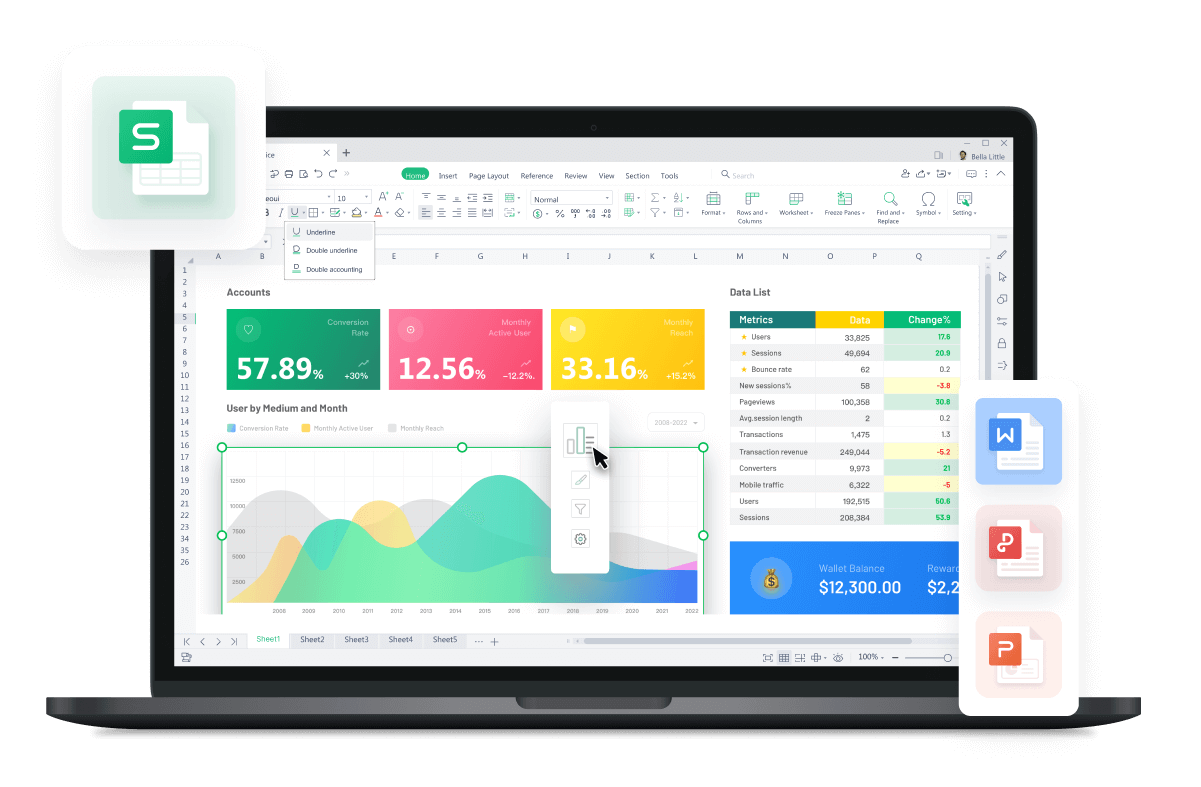Free All-in-One Office Suite with PDF Editor
Edit Word, Excel, and PPT for FREE.
Read, edit, and convert PDFs with the powerful PDF toolkit.
Microsoft-like interface, easy to use.
Windows • MacOS • Linux • iOS • Android

More features in AutoFilter
Uploaded time: December 29, 2021 Difficulty Beginner
More features in AutoFilter

More features in AutoFilter
When dealing with large amounts of table data, we often need to temporarily hide some of them with AutoFilter to focus on those we need.
Here we will compare the AutoFilter function of WPS Spreadsheets and Microsoft Excel. In general, both of them support filtering data according to numbers, text, color and so on.
WPS Spreadsheets has three special advantages. Let's go through them one by one.
First, Click the Home tab, and click the AutoFilter drop-down button to turn on the AutoFilter. Its shortcut key is Ctrl+Shift+L.
· Filter Duplicate Items and Unique Items
In the filter window, there are two options: Duplicate Items and Unique Items.
Now we need to remove the duplicate items in the column “Customer Number” of this table.
1. We can click the triangle icon and click Duplicate Items to filter duplicate items. Sorting the data makes it more clear.
2. The same goes for filtering out unique items. Click Unique Items to filter out the needed items.
· Export filtered items quickly
Take this worksheet as an example.
We want to count the total orders of each product quickly.
1. Click the triangle icon in the Product name area.
2. Click Export in the pop-up menu to generate a new worksheet.
3. This worksheet lists the product names and their total orders.
· Create a chart of the filtered data
WPS Spreadsheets can also analyze the filtered data by clicking analysis in the bottom left corner to generate a chart of the filtered data.
If we change the data of the table, the chart's data will change along with it.
We can click Edit to modify the information on the chart.
For example,we want to display the total sales amount of the Sales department as a chart.
1. Select Total sales amount in the By drop-down list, and select Summarize By Sum below.
2. Since we need the total sales amount of each sales department, we choose Sales Department in the Dimension area.
3. We can also change the Chart Title and click Apply to finish it.
4. In the end, we can also select Export Chart to export it into a new worksheet, or we can click Export Chart as Picture to generate a picture.




Does this video help you?